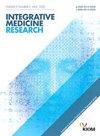艾灸治疗化疗性白细胞减少的比较疗效:贝叶斯网络荟萃分析
IF 3
4区 医学
Q2 INTEGRATIVE & COMPLEMENTARY MEDICINE
引用次数: 0
摘要
背景艾灸已被应用于各种临床治疗,包括化疗引起的白细胞减少症。使用贝叶斯网络荟萃分析,本研究评估了大量已发表的数据,以确定艾灸治疗化疗引起的白细胞减少症的最有效方法。方法检索spubmed、EMBASE等8个数据库及2个临床试验注册平台,检索时间从各自建立日期至2024年1月。所有艾灸治疗化疗所致白细胞减少的随机对照试验(rct)均被纳入。主要结局指标为白细胞计数,次要结局指标为Karnofsky表现状态评分。使用R(4.3.1版本)的Stata(17.0版本)和gemtc包(1.0-0版本)进行网络meta分析。本研究已在普洛斯彼罗(PROSPERO)数据库注册,注册号为CRD42023402588。结果共纳入30项随机对照试验,共2282例患者,涉及12种艾灸相关疗法。累积排序曲线下的表面结果显示,治疗白细胞减少症效果最好的是雷火灸联合用药(95.9%)、颗粒灸联合用药(76.2%)和隔药灸(76.0%)。颗粒化艾灸联合用药改善Karnofsky表现状态评分排名第一(76.5%)。结论雷火灸联合药物治疗化疗所致白细胞减少症疗效最佳。协议注册普洛斯普洛斯,CRD42023402588。本文章由计算机程序翻译,如有差异,请以英文原文为准。
Comparative efficacy of moxibustion in chemotherapy-induced leukopenia: A Bayesian network meta-analysis
Background
Moxibustion has been applied in various clinical treatments, including chemotherapy-induced leukopenia. Using a Bayesian network meta-analysis, this study assessed a wide range of published data to identify the most efficient and effective method of moxibustion therapy for treating chemotherapy-induced leukopenia.
Methods
PubMed, EMBASE, and eight other databases plus two clinical trial registration platforms were searched from their respective inception date to January 2024. All randomized controlled trials (RCTs) of moxibustion for chemotherapy-induced leukopenia were included. The primary outcome indicator was white blood cell count, and the secondary outcome was the Karnofsky performance status score. Stata (version 17.0) and the gemtc package (version 1.0–0) of R (version 4.3.1) were used to perform the network meta-analysis. This study is registered in the International Prospective Register of Systematic Reviews (PROSPERO) database, registration number CRD42023402588.
Results
Thirty RCTs with 2282 total patients involving 12 types of moxibustion-related therapies were identified. Results of the surface under the cumulative ranking curve revealed the following treatments as most effective for leukopenia: thunder-fire moxibustion combined with medication (95.9 %), grain-sized moxibustion combined with medication (76.2 %), and herb-separated moxibustion (76.0 %). Grain-sized moxibustion combined with medication (76.5 %) ranked first in improving Karnofsky performance status scores.
Conclusion
Thunder-fire moxibustion combined with medication appears to be the most effective treatment for chemotherapy-induced leukopenia.
Protocol registration
PROSPERO, CRD42023402588.
求助全文
通过发布文献求助,成功后即可免费获取论文全文。
去求助
来源期刊

Integrative Medicine Research
Medicine-Complementary and Alternative Medicine
CiteScore
6.50
自引率
2.90%
发文量
65
审稿时长
12 weeks
期刊介绍:
Integrative Medicine Research (IMR) is a quarterly, peer-reviewed journal focused on scientific research for integrative medicine including traditional medicine (emphasis on acupuncture and herbal medicine), complementary and alternative medicine, and systems medicine. The journal includes papers on basic research, clinical research, methodology, theory, computational analysis and modelling, topical reviews, medical history, education and policy based on physiology, pathology, diagnosis and the systems approach in the field of integrative medicine.
 求助内容:
求助内容: 应助结果提醒方式:
应助结果提醒方式:


